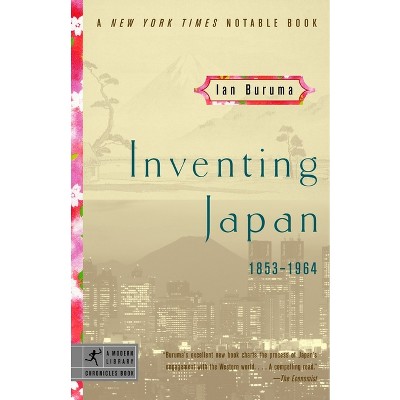Sponsored

Green Star Japan - by Ian Rapley (Hardcover)
In Stock
Sponsored
About this item
Highlights
- During the first half of the twentieth century, a wide range of the Japanese populace was drawn to the possibilities offered by the proposed language known as Esperanto.
- About the Author: Ian Rapley is a senior lecturer of East Asian history in the history department of Cardiff University, UK.
- 200 Pages
- History, Asia
Description
About the Book
"During the first half of the twentieth century, a wide range of the Japanese populace was drawn to the possibilities offered by the proposed language known as Esperanto. Created in the nineteenth century by a European, L. L. Zamenhof, Esperanto seemed an unlikely candidate for Japanese interest, but to its advocates it was a potential solution to the international language problem: the question of how to effectively communicate across linguistic and national borders. Using the history of Japanese Esperanto up to the end of the Second World War, in Green Star Japan Ian Rapley argues that scholars of modern Asia should pay serious attention to both Esperanto and the international language problem. One key aspect of Japan's modernization was its growing contact with the wider world, not just with the West but with countries across the globe. The increasingly complex networks of these transnational interactions involved trade, diplomacy, and intellectual flows; each contact required the identification of some common medium of communication. Esperanto was designed to be as easy to learn as possible, with a simple grammar and system of word formation, and none of the idiosyncrasies and irregularities that accumulate over time in unplanned national or regional languages. This appealed to many Japanese who discovered that to be modern meant being a student of one or more foreign languages. Japanese Esperantists were active at the League of Nations, in the Soviet Union, and in villages across Japan. They wrote essays and letters, traveled internationally, built friendships, taught classes, and made radio broadcasts. Green Star Japan offers a new approach to understanding Japan's global modernity, by closely examining the efforts to spread a language designed to bring peoples of the world together. This work will interest scholars and students of modern Japanese and East Asian history, and especially within the vibrant fields of transnational/global history and the history of language"--Book Synopsis
During the first half of the twentieth century, a wide range of the Japanese populace was drawn to the possibilities offered by the proposed language known as Esperanto. Created in the nineteenth century by a European, L. L. Zamenhof, Esperanto seemed an unlikely candidate for Japanese interest, but to its advocates it was a potential solution to the international language problem: the question of how to effectively communicate across linguistic and national borders. Using the history of Japanese Esperanto up to the end of the Second World War, Ian Rapley argues that scholars of modern Asia should pay serious attention to both Esperanto and the international language problem.
One key aspect of Japan's modernization was its growing contact with the wider world, not just with the West but with countries across the globe. The increasingly complex networks of these transnational interactions involved trade, diplomacy, and intellectual flows; each contact required the identification of some common medium of communication. Esperanto was designed to be as easy to learn as possible, with a simple grammar and system of word formation, and none of the idiosyncrasies and irregularities that accumulate over time in unplanned national or regional languages. This appealed to many Japanese who discovered that to be modern meant being a student of one or more foreign languages. Japanese Esperantists were active at the League of Nations, in the Soviet Union, and in villages across Japan. They wrote essays and letters, traveled internationally, built friendships, taught classes, and made radio broadcasts. Closely examining the efforts to spread a language designed to bring peoples of the world together, Green Star Japan offers a new approach to understanding Japan's global modernity. This book will interest scholars and students of modern Japanese and East Asian history, and especially within the vibrant fields of transnational/global history and the history of language.Review Quotes
Green Star Japan offers a concise, beautifully written history of the Esperanto movement in Japan. It is also the first treatment of the topic in English. Rapley addresses how groups across the political and cultural spectrum confronted this constructed international language, from socialists on the left to figures, such as Kita Ikki, on the far right. And, as he shows, Esperanto still has a relatively small, but ardent, following in Japan. As elsewhere in the world, Esperanto embodied (and continues to do so) for many Japanese something far greater than language itself.--Joshua A. Fogel, York University
About the Author
Ian Rapley is a senior lecturer of East Asian history in the history department of Cardiff University, UK.










